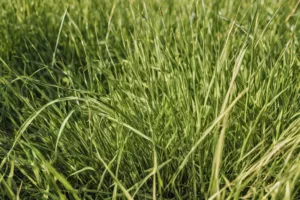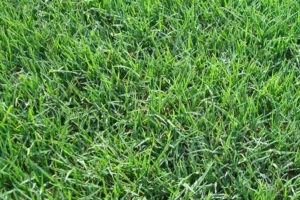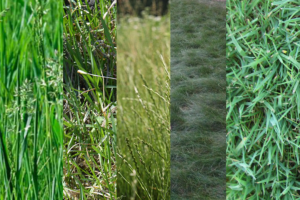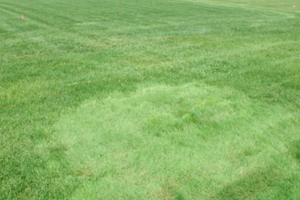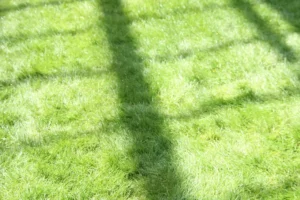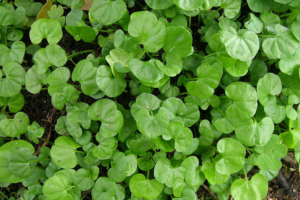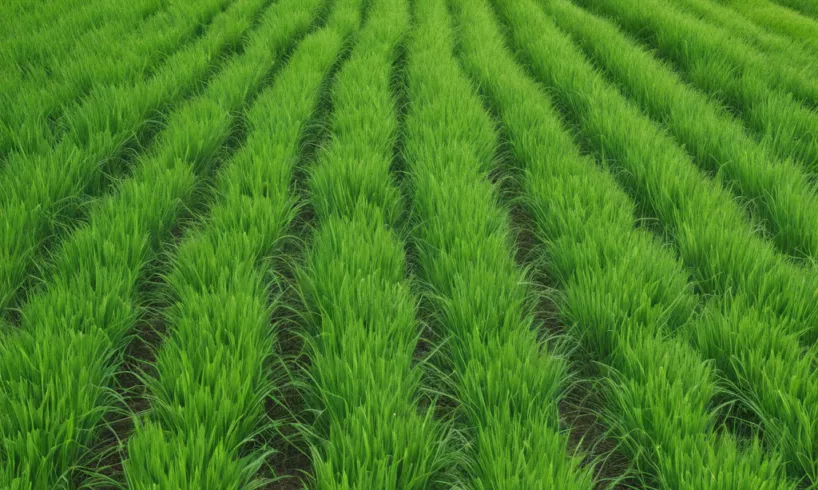
Did you know? Kentucky Bluegrass, despite its name, isn’t from Kentucky or even North America. This resilient and lush grass species has roots that trace back to the temperate regions of Europe and Asia. At LawnInformer, we prioritize lawn care, which is why we’re excited to bring you this comprehensive guide to one of the most beloved grass species for lawns across the United States.
History and Origin of Kentucky Bluegrass
Kentucky Bluegrass, or Poa pratensis, was introduced to North America by early European settlers in the 1600s. They brought it for its excellent pasture qualities. Over time, this hardy grass spread across the continent, thriving in Kentucky’s fertile soils. Today, it’s a staple in landscapes ranging from home lawns to expansive golf courses.
Characteristics of Kentucky Bluegrass
Appearance: Imagine a sea of rich, emerald-green blades stretching across your lawn. Kentucky Bluegrass is easily recognizable by its boat-shaped leaf tips and dense, carpet-like growth.
Growth Habits and Seasonal Changes: As a cool-season grass, Kentucky Bluegrass flourishes in early spring and fall. During the hot summer months, it may go dormant and turn brown, but don’t worry—it will bounce back with cooler temperatures and adequate watering.
Soil and Climate Preferences: Kentucky Bluegrass prefers well-drained, fertile soils and thrives in regions with cool, humid summers and cold winters. However, its adaptability allows it to grow in various climates.
Planting Kentucky Bluegrass
When to Plant: The best times to plant Kentucky Bluegrass are during its peak growth periods in the spring and fall. This gives the grass ample time to establish itself before the summer heat or winter cold sets in.
Soil Preparation: Good soil preparation is key. Remove any existing grass or weeds, loosen the soil with a garden tiller, and add organic matter to improve soil structure. Level and lightly compact the soil to create a firm seedbed.
Sowing the Seeds: Spread the seeds evenly at a rate of 2 to 3 pounds per 1,000 square feet, then lightly rake them in to ensure good seed-to-soil contact. Water thoroughly and keep the area moist until the seeds germinate.
Maintaining Kentucky Bluegrass
Watering: Kentucky Bluegrass needs about 1 to 1.5 inches of water per week. Water deeply in the morning to reduce evaporation and prevent disease.
Fertilizing: Fertilize in the spring and fall with a balanced lawn fertilizer. Avoid fertilizing during the hot summer months to prevent stress and weed growth.
Mowing: Keep your lawn looking its best by mowing to a height of 2.5 to 3.5 inches. This promotes deep root growth and helps the lawn resist pests and diseases.
Pest and Disease Control: Regular monitoring can help detect pests like lawn grubs and diseases such as leaf spot early. Maintain proper lawn care practices to prevent these issues.
Benefits of Kentucky Bluegrass
Aesthetic Appeal: Kentucky Bluegrass’s lush, vibrant green color adds a touch of elegance to any landscape, making it a favorite among homeowners and landscape professionals.
Durability and Resilience: This grass can withstand various climates and recover from damage due to its rhizomatous growth habit.
Tolerance of Foot Traffic: Perfect for families and pet owners, Kentucky Bluegrass can handle high foot traffic and quickly recover from wear and tear.
Environmental and Health Benefits: Beyond its beauty, Kentucky Bluegrass reduces soil erosion, improves air quality, and provides a relaxing green space for outdoor activities.
Kentucky Bluegrass vs. Other Types of Grass
Perennial Ryegrass: Quick to establish but less capable of spreading and recovering from damage compared to Kentucky Bluegrass.
Tall Fescue: Drought-tolerant but has a clumping growth habit, resulting in a less uniform lawn than Kentucky Bluegrass.
Bermuda Grass: Thrives in hot climates but goes dormant in cooler weather, unlike the more temperature-tolerant Kentucky Bluegrass.
Zoysia Grass: Heat and drought-tolerant but slower to establish and browns after the first frost, whereas Kentucky Bluegrass remains green into the fall.
Frequently Asked Questions about Kentucky Bluegrass
Is Kentucky Bluegrass suitable for home lawns? Yes, it provides a beautiful, durable lawn ideal for families and pets.
How often should I water Kentucky Bluegrass? It needs 1 to 1.5 inches of water per week during active growth periods.
Does Kentucky Bluegrass spread? Yes, it spreads via rhizomes, filling in bare spots and creating a dense, uniform lawn.
Can Kentucky Bluegrass grow in the shade? It tolerates light shade but may become thin in heavily shaded areas.
How tall does Kentucky Bluegrass grow? It can grow up to 24 inches if left un-mowed, but is typically kept at 2.5 to 3.5 inches.
Does Kentucky Bluegrass stay green in winter? It stays green into the fall and early winter but goes dormant in prolonged cold or drought.
What type of soil is best for Kentucky Bluegrass? Well-drained, fertile soils with a pH between 6.0 and 7.0 are ideal.
At LawnInformer, we believe in the beauty and benefits of a well-maintained lawn. Kentucky Bluegrass offers a blend of aesthetic appeal and practical advantages that make it a top choice for homeowners. Whether you’re starting a new lawn or improving an existing one, Kentucky Bluegrass is a versatile and rewarding option. Here’s to the joy of a beautiful, healthy lawn!

Bob Green, a passionate lawn care enthusiast with over two decades of landscaping experience, is this website’s proud owner. His vast knowledge of horticulture and dedication to helping homeowners maintain beautiful lawns are reflected in the valuable content he shares on his platform. John has always been interested in Agrostology.









